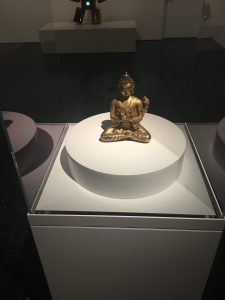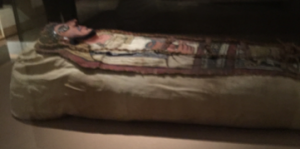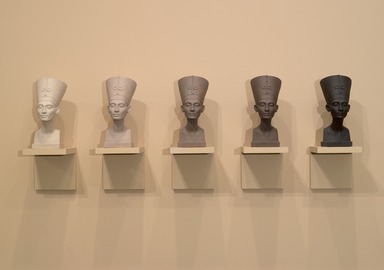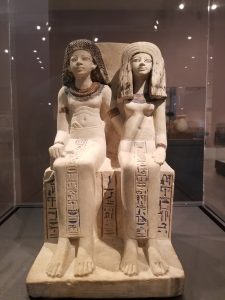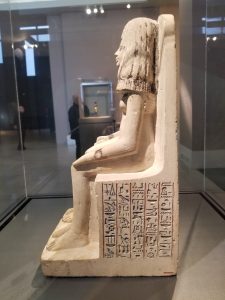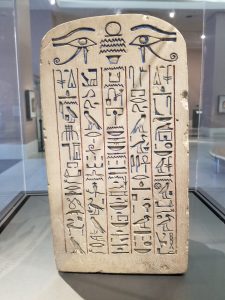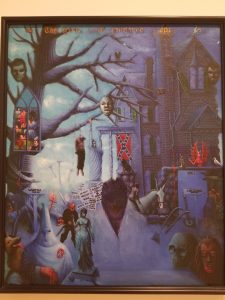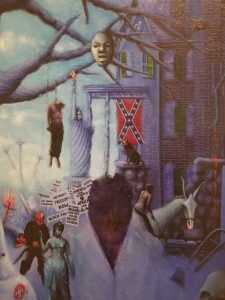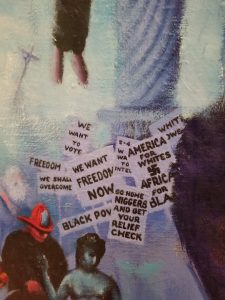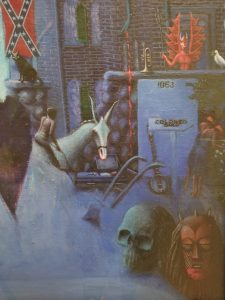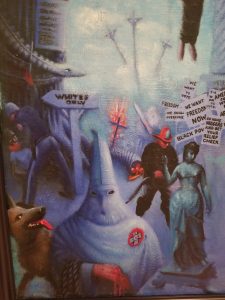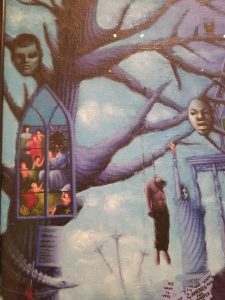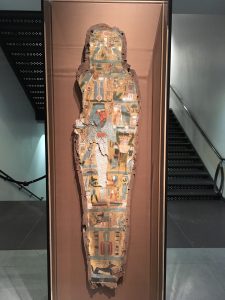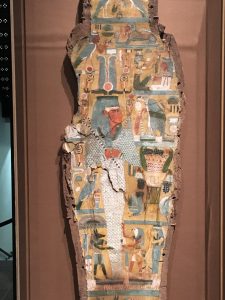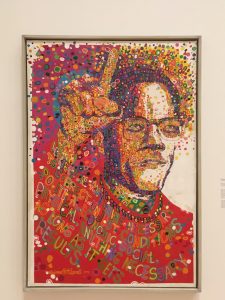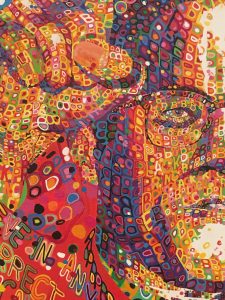I chose Cat and Mouse from the Egyptian Reborn: Art for Eternity Exhibit. The formal properties we are suppose to look at are scale, medium, composition, and material. The scale is 1/2 x 6 13/16 x 7/16 in. (8.9 x 17.3 x 1.1 cm). The mediums are limestone, and ink. Limestone is a popular medium which was used in Egypt. There are 7 elements of composition. Color, form, shape, space, value, line, and texture. The color of Cat and Mouse is sorta sepia rock (limestone) and black ink. The form is two dimensional (if you go according to the image presented). The shape is flat. There is a lot of negative space in the art piece because the background isn’t filled out. I guess there’s a high value? There’s horizontal, vertical, diagonal, curved, pointy lines. Lastly the texture is smooth except in a few spots where there are some ridges from the limestone. Artist unknown.
The historical context is it was created in 1295-1075 B.C.E. It’s somewhere from the XIX Dynasty to XX Dynasty and it is from the New Kingdom period. It is drawing of a standing cat on the left offering a feather fan and plucked animal feather to a seated female mouse (right). The mouse wears a long skirt and has a flower on her forehead. She holds a dish in her right hand, and is holds a flower (I think) and cloth (often held by pharaohs) in her left hand. The cat also holds a similar cloth. The mouse is seated on a folding stool with animal legs and covered with an animal hide with the tail hanging over the edge of the stool.
The subject matter is unknown but my guess is either something humorous or satire about the royals at that time. It’s now a long lost story.
I can relate this to what we learned in class because we’ve seen painting of animals, which we are suppose to understand that they are really depictions of humans.


